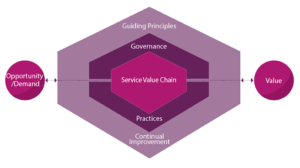The fast-paced nature of the IT world poses several issues for IT service workers, not the least of which is risk management. Businesses are always changing and developing in the digital age, embracing new technology and transferring their services. Managing risk successfully in the face of constant change is critical. Continue reading to see how you can master effective risk management strategies as an ITSM.
What do we know about risk management?
We’ve talked about risk management methods before at ITIL Training. ITSMs can define the probability of a risk arising using a risk matrix. It will entail examining corporate assets, identifying threats to those assets, and monitoring threat parameters as well as the company’s susceptibility. It is easier to identify a risk’s threat level and a chance of occurrence using the risk matrix, making it much easier for management to make choices in the future.
Within the ITIL lifecycle, the risk management framework is recognized. Such techniques assist businesses to detect, analyze, and prioritize possible business risks that might result in losses or impede their ability to meet their goals. Risk management is a continuous process that is critical to all aspects of an organization’s operations. It is necessary for the co-creation of value and the service value system of an organization (SVS).
Best practices for handling risk
Risk management is a major topic in ITIL4 training — all you need to know about risk is in one place. The ITIL risk management process model aids in the monitoring of current risks as well as the identification of new ones. It also assists in making the danger level and effect of a risk, as well as risk management principles. The practice guide analyzes four major risk management techniques, which are:
- Risk avoidance – One of the most effective ways to avoid risk is to avoid engaging in a dangerous activity in the first place. The problem is that this isn’t always feasible. If the risk is natural, beyond your control, or business-related, for example, this may not be a suitable alternative.
- Risk modification and reduction – The risk’s impact can be reduced by identifying and adopting measures. Prioritize risk-reduction initiatives and create a risk-management action plan that includes mitigation and risk-reduction strategies.
- Risk-sharing – Passing some of the risks to a third party is another important strategy to mitigate the damage. Risk-sharing may be an effective approach to minimize possible damage, albeit it varies from business to business and depends on the scenario.
- Risk-retention and acceptance – Finally, when it comes to risk management, deciding to accept a risk because it is below an acceptable level is critical. The business may proceed with greater confidence once a risk has been recognized (type and nature), assessed (effect and probability), and an action plan has been developed.
Risk management is a never-ending activity that must be assessed and managed regularly. As a result, firms must identify the roles and responsibilities of people involved in ITIL risk management. Because all IT personnel have a role to play in risk management, getting the entire team ITIL certified may be quite advantageous. Companies that have had the most success have implemented ITIL at all levels, from corporate owners to front-line service personnel.
Expect the unexpected
The coronavirus pandemic, of course, has taught us all to be prepared for the unexpected. Effective management of digital services has been critical to advancement, and it will continue to play a critical role in organizations’ risk management preparation for change. Continuity management and risk management work hand in hand in this way. A significant factor is being properly prepared to undertake change and respond quickly.
Continuity success requires the ability to react fast and flexibly, as well as the ability to anticipate and measure risk. As a result, businesses must turn to agile approaches to improve their resilience. Operating in a more agile manner will ensure a quick reaction and little disturbance. ITIL 4 gives up-to-date recommendations on resilience and agility, allowing trained staff to alter operating models and be prepared to act in the event of a risk. Being able to cope with change is a need in our ever-changing environment.
Here at CourseMonster, we know how hard it may be to find the right time and funds for training. We provide effective training programs that enable you to select the training option that best meets the demands of your company.
For more information, please get in touch with one of our course advisers today or contact us at training@coursemonster.com


